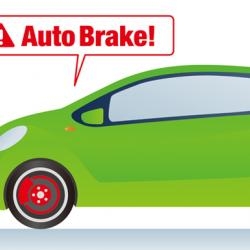
In case you missed the news, our nation’s roadways are about to get safer.
On March 17, the U.S. Department of Transportation’s National Highway Traffic Safety Administration (NHTSA) and the Insurance Institute for Highway Safety (IIHS) announced a commitment by 20 automakers representing more than 99 percent of the U.S. auto market to make automatic emergency braking (AEB) a standard feature on virtually all new cars no later than 2022. From our perspective, this is great news, and represents one more step toward improving safety on U.S. highways and byways.
AEB systems help prevent crashes or reduce their severity by applying the brakes for the driver. They use on-vehicle sensors--such as radar, cameras or lasers--to detect an imminent collision, warn the driver and apply the brakes if the driver doesn’t take sufficient action quickly enough. Research by the IIHS found that AEB systems reduce rear-end crashes by 39 percent and reduce rear-end collisions with injuries by 42 percent. The NHTSA estimates that automakers’ implementation of AEB technology will prevent 28,000 crashes and 12,000 injuries in the first three years, alone.
Who can argue with results like these? We applaud this move by automakers and share their commitment to improving on road safety.
With driving behavior widely recognized as the main contributor to accidents, we offer fleets an array of solutions designed to help commercial drivers improve performance and keep vehicles, drivers, cargo, and reputations safe. Omnitracs Analytics’ Accident Severity Model is one of a multitude of innovative, predictive analytics solutions we offer the most progressive fleets. By harnessing sophisticated technologies, tremendous processing power, and big data, predictive models can tell you who is at risk of an accident — and why — so that you can intervene before it happens.
According to the University of Michigan’s Transportation Research Institute, collision prevention systems like AEB would decrease truck fatalities by roughly 44 to 47 percent. It will be interesting to watch how discussions evolve and how the commercial trucking industry responds to the opportunities associated with these advanced technologies. Stay tuned for updates.
To learn more about Omnitracs’ solutions for safety and security, visit Safety, Security, and Video.
